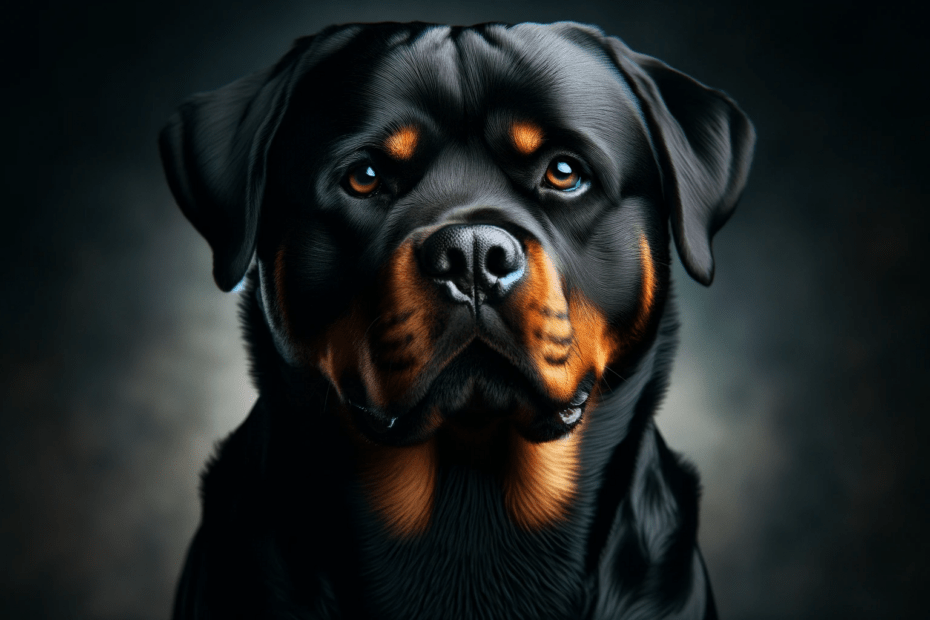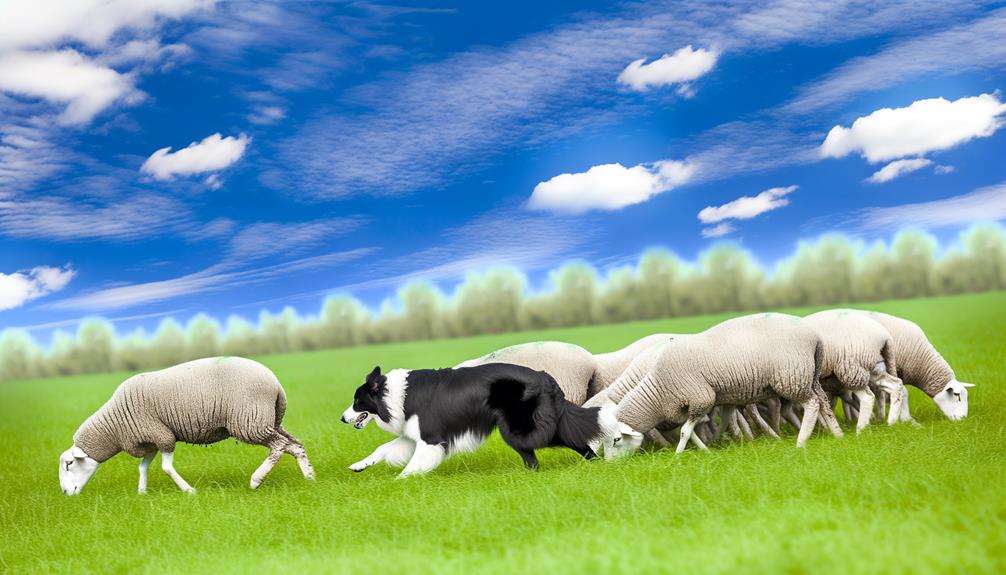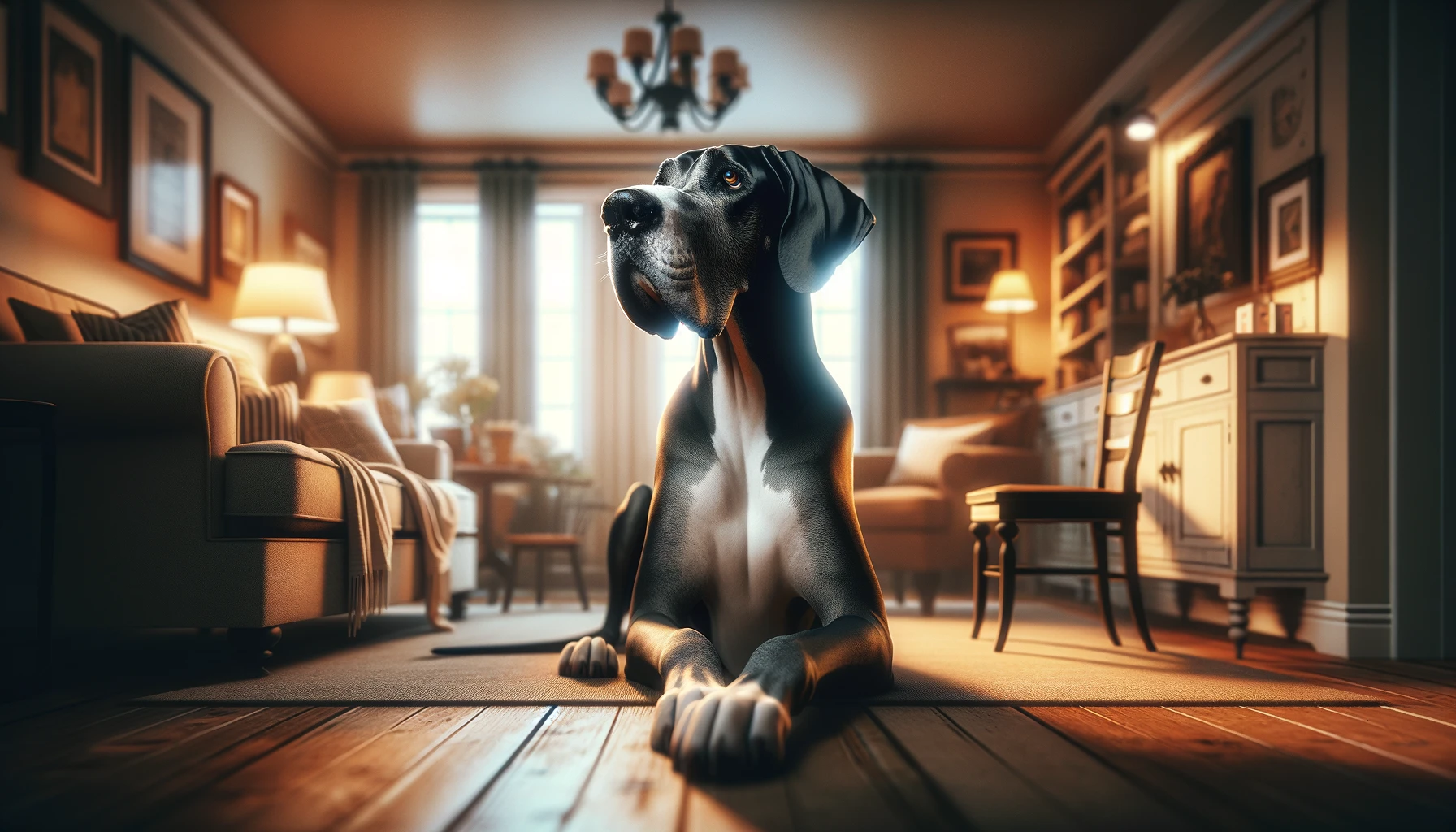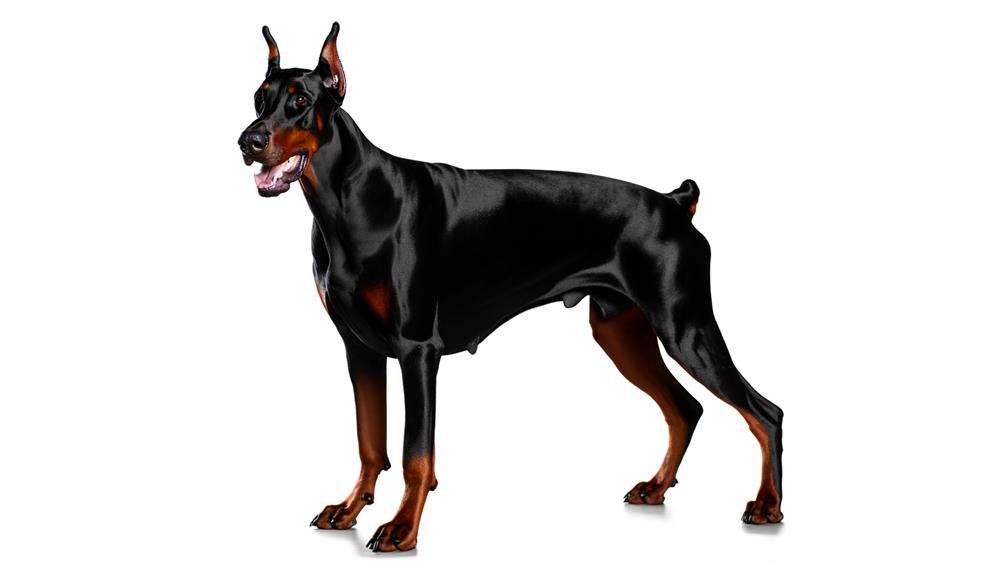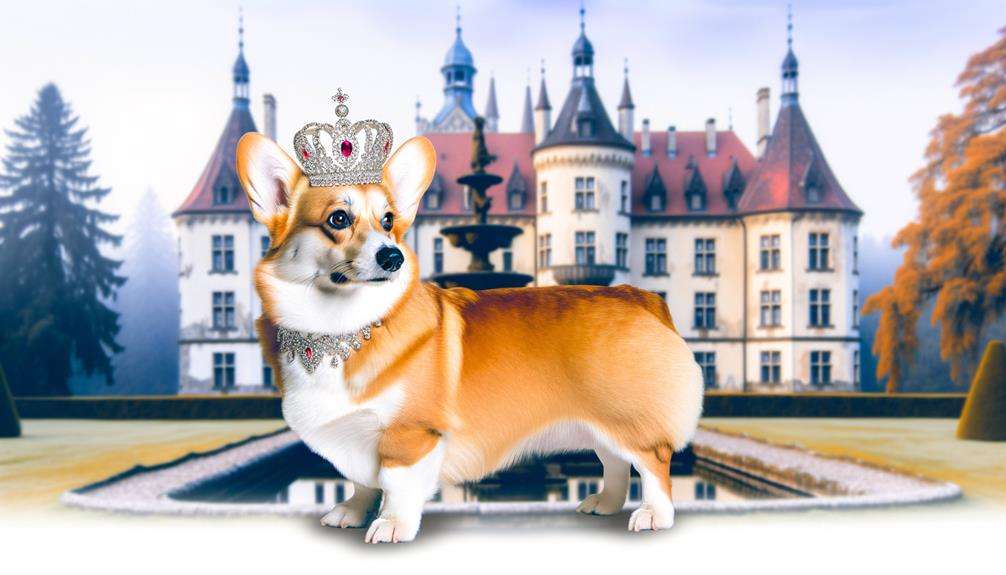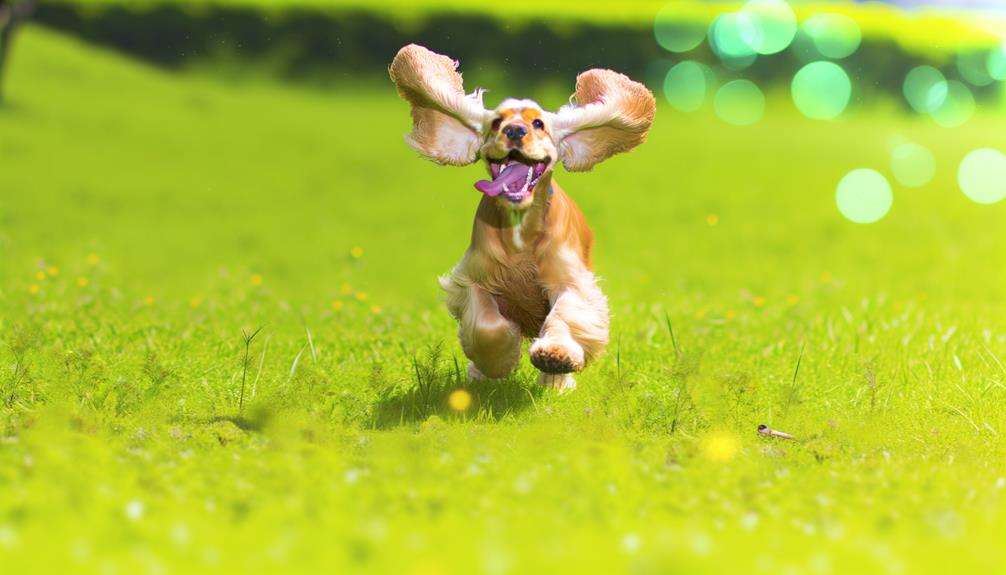Are you in need of a loyal and protective guard dog? Look no further! This comprehensive guide is here to help you find the perfect breed.
German Shepherds, Rottweilers, Doberman Pinschers, and more – we've got them all covered. Discover the strengths and characteristics of each breed, ensuring you make an informed and practical choice.
From their steadfast loyalty to their unwavering protective instincts, these dogs will be your trusted guardians, keeping you safe and secure.
Key Takeaways
- German Shepherds, Rottweilers, Doberman Pinschers, Bullmastiffs, Boxers, Great Danes, Belgian Malinois, and Akita Inus are loyal and protective guard dog breeds.
- Proper training and early socialization are crucial for these breeds to ensure good behavior and prevent aggression.
- Positive reinforcement methods, such as treats and praise, are effective in training these breeds.
- Regular exercise, balanced diet, and weight management are important for minimizing health risks in these breeds.
German Shepherd Dogs
If you're looking for a loyal and protective guard dog breed, you can't go wrong with the German Shepherd's impressive intelligence and unwavering loyalty. German Shepherds are known for their exceptional intelligence, making them highly trainable and capable of learning complex tasks quickly. Their intelligence allows them to excel in various roles, including search and rescue, police work, and as service dogs.
When it comes to their health, German Shepherds are generally a robust breed. However, they're prone to certain health concerns that owners should be aware of. One common issue is hip dysplasia, a condition where the hip joint doesn't develop properly, leading to pain and mobility problems. Regular exercise, a balanced diet, and weight management can help minimize the risk of hip dysplasia.
Another health concern for German Shepherds is degenerative myelopathy, a progressive spinal cord disease that affects mobility. While there's no cure for this condition, early detection and management can help slow its progression and improve the dog's quality of life.
Regular veterinary check-ups, a nutritious diet, and ample exercise are crucial for maintaining the overall health and well-being of German Shepherds. By being proactive and addressing any health concerns promptly, you can ensure that your loyal and protective German Shepherd lives a long and healthy life.
Rottweilers
Are you curious about the next loyal and protective guard dog breed discussed in this comprehensive guide? Well, let's dive into the world of Rottweilers.
Known for their strength, intelligence, and loyalty, Rottweilers make excellent guard dogs and companions. Here are some key points to understand about their temperament and training techniques:
- Temperament: Rottweilers are confident, calm, and courageous dogs. They're known to be protective of their families and can be reserved with strangers. Early socialization and proper training are crucial to ensure they develop a well-balanced temperament.
- Training Techniques: Rottweilers are intelligent and eager to please, making them highly trainable. Positive reinforcement methods, such as rewards and praises, work best with these dogs. Consistency, patience, and firm leadership are essential for successful training.
- Socialization: Proper socialization from an early age is vital for Rottweilers. Expose them to various people, animals, and environments to help them become well-rounded and confident dogs.
- Obedience Training: Rottweilers benefit from obedience training to establish boundaries and reinforce good behavior. Basic commands like sit, stay, and come should be taught early on, followed by more advanced training as they mature.
Doberman Pinschers
Now let's delve into the world of Doberman Pinschers, another loyal and protective guard dog breed discussed in this comprehensive guide. Known for their intelligence and loyalty, Doberman Pinschers make excellent guard dogs and family companions. Understanding their temperament and providing proper training are essential for raising a well-behaved and obedient Doberman Pinscher.
The temperament of a Doberman Pinscher is often described as alert, energetic, and fearless. They're known to be highly intelligent and quick learners, making them easy to train. However, this breed can also be stubborn and assertive, so consistent and firm training is crucial. Early socialization is important to ensure that they get along well with other animals and people. Positive reinforcement methods, such as treats and praise, work best with Doberman Pinschers.
Training a Doberman Pinscher is a rewarding experience that requires patience and dedication. Their natural protective instincts make them excellent guard dogs, but it's important to channel their energy and drive appropriately. Basic obedience training should start at an early age and continue throughout their lives. Teaching commands like sit, stay, and come are essential for their safety and the safety of others. Advanced training, such as agility or scent work, can also be beneficial to keep their minds stimulated and prevent boredom.
Bullmastiffs
Moving on to Bullmastiffs, these loyal and protective guard dogs are known for their imposing size and gentle nature. If you're considering getting a Bullmastiff as your guard dog, it's important to understand their temperament and the proper training techniques to ensure a harmonious and well-behaved companion.
Here are some key points to consider about Bullmastiffs:
- Temperament: Bullmastiffs have a calm and affectionate temperament, making them great family pets. They're known for their loyalty and protective instincts, making them excellent guard dogs. However, they can be stubborn at times, so consistent training is necessary.
- Training Techniques: When training a Bullmastiff, it's important to use positive reinforcement methods. They respond well to praise, treats, and affection. Start training early and be patient, as they're slow to mature. Socialization is also crucial to prevent any aggression towards strangers or other animals.
- Obedience Training: Teaching basic commands such as sit, stay, and come is essential for a well-behaved Bullmastiff. Use consistent commands and repetitive training sessions to reinforce their understanding.
- Leash Training: Due to their large size and strength, leash training is crucial for Bullmastiffs. Teach them to walk calmly on a leash, without pulling or lunging. Use a sturdy leash and harness to have better control during walks.
Boxers
If you're considering a loyal and protective guard dog breed, look no further than Boxers. These dogs have a rich history and are known for their strength, intelligence, and loyalty. Boxers were originally bred in Germany in the 19th century, and they were used as hunting dogs and later as police dogs. Today, they're popular not only as family pets but also as guard dogs.
When it comes to training techniques for Boxers, consistency and positive reinforcement are key. These dogs are highly trainable and eager to please their owners. Start training your Boxer from a young age, using rewards such as treats and praise to reinforce good behavior. Socialization is also essential for Boxers, as it helps them become well-rounded dogs who are comfortable in various situations and around different people and animals.
Boxers have a natural protective instinct, making them excellent guard dogs. However, it's important to note that they're also friendly and playful, making them great companions for families. With proper training and socialization, Boxers can be both protective and gentle, making them the perfect choice for those looking for a loyal and protective guard dog breed.
Great Danes
When it comes to guard dogs, Great Danes are in a league of their own. Known for their incredible strength and size, they're often referred to as gentle giants.
These imposing creatures have the ability to intimidate intruders with their sheer presence alone, making them an excellent choice for those seeking a loyal and protective companion.
Strength and Size
As you explore the topic of strength and size in loyal and protective guard dog breeds, you'll find that Great Danes, with their impressive stature and powerful build, are truly remarkable. These gentle giants possess the perfect combination of strength, size, and agility, making them highly effective as guard dogs.
Here are four key points to understand about the strength and size of Great Danes:
- Imposing Stature: Great Danes are one of the tallest breeds, standing at an average height of 30 inches at the shoulder. Their sheer size alone can be intimidating to potential intruders.
- Muscular Build: These dogs have a solid and muscular frame, which gives them the strength to protect their families and property. Their powerful bodies enable them to deter threats effectively.
- Quick Reflexes: Despite their large size, Great Danes are surprisingly agile. They possess remarkable speed and agility, allowing them to respond swiftly to any perceived danger.
- Physical Presence: The sheer presence of a Great Dane is often enough to deter intruders. Their imposing size and confident demeanor make them an effective deterrent, as they command respect and attention.
When it comes to strength and size, Great Danes are undoubtedly one of the most impressive guard dog breeds.
Gentle Giants
Great Danes, with their imposing stature and gentle nature, make for exceptional guard dogs. These gentle giants possess a calm and composed demeanor, which makes them well-suited for the role of a protective companion. Known for their towering height and muscular build, Great Danes have a commanding presence that can deter potential intruders. Despite their size, Great Danes are incredibly gentle and affectionate with their families, making them excellent family pets as well.
When it comes to temperament, Great Danes share some similarities with the Akita breed. Both breeds are known for their loyalty and devotion to their owners. They're naturally protective and will go to great lengths to defend their loved ones. However, while Akitas can be more dominant and aloof, Great Danes are typically more friendly and sociable. With proper training and socialization, Great Danes can be both reliable guard dogs and gentle companions, making them a popular choice for families seeking a loyal and protective pet.
Belgian Malinois
If you're looking for a loyal and protective guard dog, the Belgian Malinois is an excellent choice. Here are some training tips and insights into their working abilities:
- Training Tips:
- Belgian Malinois are intelligent and highly trainable dogs.
- Start their training early and be consistent.
- Use positive reinforcement techniques like treats and praise.
- Socialize them with people and other animals from a young age to prevent aggression.
- Provide mental stimulation through interactive toys and challenging tasks.
- Regular exercise is crucial to keep them physically and mentally fit.
- Working Abilities:
- Belgian Malinois excel in various working roles.
- They're often employed in law enforcement, military, and search and rescue operations.
- Their high drive and energy levels make them excellent at tasks like tracking, obedience, and agility.
- They've a natural instinct to protect, making them ideal for guarding homes and properties.
- Belgian Malinois are also known for their scent detection abilities, making them valuable in drug detection and bomb detection work.
Akita Inus
When it comes to Akita Inus, their temperament traits are worth considering. These loyal and protective dogs are known for their strong guarding instincts and can be wary of strangers.
Training techniques for Akitas should focus on establishing leadership and setting clear boundaries, as they can be stubborn and independent.
Understanding the breed's history, which dates back to ancient Japan, can provide valuable insight into their characteristics and needs.
Akita Temperament Traits
As you consider adding an Akita Inu to your family, it's important to understand the unique temperament traits of this breed. Akitas are known for their loyalty and protective nature, but they can also be strong-willed and independent.
Here are some key temperament traits to consider:
- Aggression Control: Akitas have a strong prey drive and can be aggressive towards other animals. Proper training and socialization from an early age is crucial to help them control their aggression.
- Socialization Techniques: Akitas have a natural aloofness towards strangers, which can lead to aggression if not properly socialized. Exposing them to different people, places, and situations can help them become more accepting and friendly.
- Loyalty: Akitas are fiercely loyal to their family and will do whatever it takes to protect them. This loyalty can sometimes manifest as possessiveness, so it's important to establish boundaries and provide consistent training.
- Independence: Akitas are independent thinkers and may not always obey commands blindly. They require a confident and experienced owner who can provide firm leadership and consistent training.
Understanding these temperament traits will help you make an informed decision about whether an Akita Inu is the right fit for your family.
Training Techniques for Akitas
To effectively train your Akita Inu, establish clear boundaries and provide consistent leadership. Leash training is an important aspect of their training routine.
Begin by introducing the leash gradually, allowing your Akita to become comfortable with it. Start with short walks in a familiar environment and gradually increase the duration and distance.
Use positive reinforcement techniques such as treats and praise to reward good behavior. It's important to be patient and consistent during the leash training process, as Akitas can be strong-willed and independent.
Socializing techniques are also crucial for Akitas, as they can be wary of strangers and other animals. Start socializing your Akita from an early age, exposing them to different people, animals, and environments.
Use positive reinforcement and reward them for calm and friendly behavior. Gradually increase the level of exposure, ensuring that each interaction is positive and supervised.
With consistent training and socialization, your Akita Inu can become a well-behaved and confident companion.
Akita Inu Breed History
To understand the origins of the Akita Inu breed, it's important to delve into their fascinating history. Here are some key points to know:
- Ancient Japanese origins: The Akita Inu breed hails from Japan and has a history that dates back thousands of years. They were initially bred for hunting large game like bears, boars, and deer.
- Imperial guardians: Akitas were highly esteemed in Japan and were often given as gifts to important dignitaries. They were even considered to be a symbol of good health, happiness, and longevity.
- Devastating events: The breed faced near extinction during World War II due to food shortages and the government's order to kill all non-military dogs. Luckily, a few dedicated breed enthusiasts managed to save the Akita Inu.
- Health concerns: Like any breed, Akita Inus have their share of health concerns. They're prone to certain conditions such as hip dysplasia, hypothyroidism, and autoimmune diseases. Regular vet check-ups and a balanced diet can help mitigate these risks.
Understanding the history of the Akita Inu breed provides valuable insights into their characteristics and helps us appreciate their resilience and loyalty. It also reminds us to prioritize their health and well-being.
Frequently Asked Questions
Are German Shepherd Dogs Good With Children and Other Pets?
Yes, German Shepherds are generally good with children and other pets. They are known for their loyalty and protective nature, which makes them great companions for families. However, proper socialization and training are important for a harmonious environment.
How Often Should Rottweilers Be Groomed?
Rottweilers should be groomed regularly to maintain their coat and overall hygiene. To keep their fur healthy, brush them at least once a week, trim their nails monthly, and check their ears for any signs of infection.
Do Doberman Pinschers Have Any Specific Health Issues to Watch Out For?
Doberman pinschers, like all dogs, can have specific health issues to watch out for. These may include genetic diseases such as dilated cardiomyopathy, von Willebrand's disease, and hip dysplasia. Regular vet check-ups are important to catch any potential problems early.
Can Bullmastiffs Be Trained to Be Friendly and Sociable?
To train bullmastiffs to be friendly and sociable, early socialization is crucial. Expose them to different people, animals, and environments. Teach basic obedience commands and reward positive behavior. Consistency and patience are key.
What Are the Exercise Requirements for Boxers?
To keep your Boxer happy and healthy, establish a regular exercise routine. Take them for daily walks, engage in playtime, and provide mental stimulation through training techniques. Consistency is key to meeting their exercise requirements.
Conclusion
In conclusion, when it comes to loyal and protective guard dog breeds, German Shepherds, Rottweilers, Doberman Pinschers, Bullmastiffs, Boxers, Great Danes, Belgian Malinois, and Akita Inus are among the top choices.
These breeds possess the necessary traits and instincts to excel in guarding and protecting their families and properties.
Their strength, intelligence, and loyalty make them reliable and effective guard dogs.
By choosing any of these breeds, you can ensure the safety and security of your loved ones and your home.
